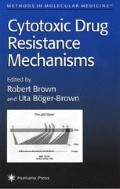Abstract
In recent years, immunohistochemistry as applied to the Bcl-2 family of proteins has represented a burgeoning area of interest to cancer researchers. The majority of studies have focused on the original member Bcl-2, first identified via its involvement in the common t(14;18) chromosomal translocation in B-cell lymphomas (1). However, since this discovery, preclinical and clinical interest in Bcl-2 has dramatically increased owing to (a) its recognition as the first of a new class of oncogene able to prolong survival by inhibiting programmed cell death (apoptosis) and (b) the discovery of many additional related genes/proteins some of which, like Bcl-2, inhibit apoptosis, whereas others, such as Bax, conversely promote cell death (2) (Table 1).
Access this chapter
Tax calculation will be finalised at checkout
Purchases are for personal use only
References
Tsujimoto, Y., Crossman, J., Jaffe, E., and Croce, C. (1985) Involvement of the bcl-2 gene in human follicular lymphoma. Science 228, 1440–1443.
Brown, R. (1997) The bcl-2 family of proteins. Br. Med. Bull. 53, 466–477.
Gasparini, G., Barbareschi, M., Doglioni, C., Palma, P. D., Mauri, F. A., Boracchi, P., Bevilacqua, P., Caffo, O., Morelli, L., Verderio, P., Pezzella, F., and Harris, A. L. (1995) Expression of bcl-2 protein predicts efficacy of adjuvant treatments in operable node-positive breast cancer. Clin. Cancer Res. 1, 189–198.
Henriksen, R., Wilander, E., and Oberg, K. (1995) Expression and prognostic significance of Bcl-2 in ovarian tumours. Br. J. Cancer 72, 1324–1329.
Ofner, D., Riehemann, K., Maier, H., Riedmann, B., Nehoda, H., Totsch, M., Bocker, W., Jasani, B., and Schmid, K. W. (1995) Immunohistochemically detectable bcl-2 expression in colorectal carcinoma: correlation with tumour stage and patient survival. Br. J. Cancer 72, 981–985.
Krajewski, S., Krajewski, M., Shabaik, A., Miyashita, T., Wang, H. G., and Reed, J. C. (1994) Immunohistochemical determination of in vivo distribution of Bax, a dominant inhibitor of Bcl-2. Am. J. Pathol. 145, 132–136.
Krajewski, S., Blomqvist, C., Franssila, K., Krajewska, M., Wasenius, V-M., Niskanen, E., Nordling, S., and Reed, J. C. (1995) Reduced expression of proapoptotic gene Bax is associated with poor response rates to combination chemotherapy and shorter survival in women with metastatic breast adenocarcinoma. Cancer Res. 55, 4471–4478.
Binder, C., Marx, D., Binder, L., Schauer, A., and Hiddemann, W. (1996) Expression of Bax in relation to Bcl-2 and other predictive parameters in breast cancer. Ann. Oncol. 7, 129–133.
Krajewski, S., Bodrug, S., Gascoyne, R., Berean, K., Krajewski, M., and Reed, J. C. (1994) Immunohistochemical analysis of Mcl-1 and Bcl-2 proteins in normal and neoplastic lymph nodes. Am. J. Pathol. 145, 515–525.
Krajewski, S., Bodrug, S., Krajewski, M., Shabaik, A., Gascoyne, R., Berean, K., and Reed, J. C. (1995) Immunohistochemical analysis of Mcl-1 protein in human tissues. Differential regulation of Mcl-1 and Bcl-2 protein production suggests a unique role for Mcl-1 in control of programmed cell death in vivo. Am. J. Pathol. 146, 1309–1319.
Krajewski, S., Krajewski, M., Shabaik, A., Wang, H-G., Irie, S., Fong, L., and Reed, J. C. (1994) Immunohistochemical analysis of in vivo patterns of Bcl-X expression. Cancer Res. 54, 5501–5507.
Krajewski, M., Moss, S. F., Krajewski, S., Song, K., Holt, P. R., and Reed, J. C. (1996) Elevated expression of Bcl-X and reduced Bak in primary colorectal adenocarcinomas. Cancer Res. 56, 2422–2427.
Krajewski, S., Krajewski, M., and Reed, J. C. (1996) Immunohistochemical analysis of in vivo patterns of Bak expression, a proapoptotic member of the Bcl-2 protein family. Cancer Res. 56, 2849–2855.
Brandtzaeg, P. (1982) Tissue preparation methods for immunohistochemistry, in Techniques in Immunohistochemistry, vol. 1 (Bullock, G. R. and Perusz, P. eds.), Academic, London, pp. 1–75.
Shi, S-R. (1991) Antigen retrieval in formalin-fixed, paraffin-embedded tissues: an enhancement method for immunohistochemical staining based on microwave oven heating of tissue sections. J. Histochem. Cytochem. 39, 741–748.
Cattoretti, G., Pileri, S., Parravicini, C., Becker, M. H. G., Poggi, S., Bifulco, C., Key, G., D’Amato, L., Sabattini, E., Feudale, E., Reynolds, F., Gerdes, J., and Rilke, F. (1993) Antigen unmasking on formalin-fixed, paraffin-embedded tissue sections. J. Pathol. 171, 83–98.
Munakata, S. and Hendricks, J. B. (1993) Effect of fixation time and microwave oven heating time on retrieval of the Ki-67 antigen from paraffin-embedded tissue. J. Histochem. Cytochem. 41, 1241–1246.
Man, Y-G. and Tavassoli, F. A. (1996) A simple epitope retrieval method without the use of microwave oven or enzyme digestion. Appl. Immunohistochem. 4, 139–141.
Hsu, S-M., Raine, L., and Fanger, H. (1981) Use of avidin-biotin-peroxidase complex (ABC) in immunoperoxidase techniques: a comparison between ABC and unlabeled antibody (PAP) procedures. J. Histochem. Cytochem. 29, 577–580.
Cordell, J. L., Falin, B., Erber, W. N., Gosh, A. K., Abdulaziz, Z., MacDonald, S., Pulford, K. A. F., Stein, H., and Mason, D. Y. (1984). Immunoenzymatic labelling of monoclonal antibodies using immune complexes of alkaline phosphatase and monoclonal anti-alkaline phosphatase (APAAP complexes). J. Histochem. Cytochem. 32, 219–229.
Author information
Authors and Affiliations
Editor information
Editors and Affiliations
Rights and permissions
Copyright information
© 1999 Humana Press Inc.
About this protocol
Cite this protocol
Kelland, L.R., Beale, P.J. (1999). Bcl-2 Family Immunohistochemistry. In: Brown, R., Böger-Brown, U. (eds) Cytotoxic Drug Resistance Mechanisms. Methods in Molecular Medicine™, vol 28. Humana Press. https://doi.org/10.1385/1-59259-687-8:201
Download citation
DOI: https://doi.org/10.1385/1-59259-687-8:201
Publisher Name: Humana Press
Print ISBN: 978-0-89603-603-1
Online ISBN: 978-1-59259-687-4
eBook Packages: Springer Protocols

